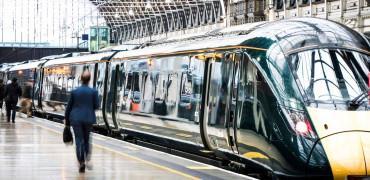The latest government figures show that in 2020 the UK’s greenhouse gas emissions were around 49% below 1990 levels. So, we’re almost half-way to achieving our net-zero by 2050 goal.
It’s good news, but it has taken us thirty years to get here, and the next three decades are going to be more challenging.
And that’s where building energy efficiency offers a massive potential for cutting our emissions.
Let's all take collective responsibility for service and maintenance
Legislative focus
The latest round of legislation updates, proposals and incentives reflect the Government’s focus in this area.
For example, the new consultation on A Performance-based Policy Framework in large Commercial and Industrial Buildings proposes a new way to record and monitor long-term operational energy use in large UK buildings.
And at a local level, the new London Plan (March 2021) requires major projects to submit energy use figures to a public database for five years post-completion.
Heating is a big target
Decarbonisation of heating (reducing our reliance on natural gas and oil) is also a big target.
As the UK’s electricity grid moves to renewable generation from wind, the Government supports a switch to electric heating, with heat pumps one of its crucial heating technologies for the future.
Government grants also aim to encourage building owners to update their technologies.
One example is the Public Sector Decarbonisation Scheme for public bodies to improve building energy efficiency and move to low-carbon heating systems. Phase 1 of the scheme is now closed, with Phase 2 set to open this week on 7th April 2021.
Engage and optimise
However, this drive to energy-efficient buildings is not simply about swapping out technologies.
It means that everyone involved in the design, installation, operation and maintenance of building services must take a long-term view of performance and efficiency.
And building services equipment can no longer be treated as ‘fit and forget. We must now ‘engage and optimise’.
For Mitsubishi Electric, this means a growing emphasis on providing maintenance ‘solutions’ along with its equipment.
Consideration of the maintenance required through the lifecycle of the equipment specified should be at the forefront of any selection or application. For example, we can supply the latest energy-efficient, low GWP refrigerant chillers and ensure that they are maintained to optimise performance and efficiency.
A natural extension
The Commercial Service & Maintenance team at Mitsubishi Electric regards itself as a natural extension of our manufacturing, sales and installation teams.
The cycle of any applied solution hinges as much on its care and maintenance as its selection and application.
We encourage our customers to go beyond the basic annual equipment checks and to take advantage of the latest monitoring and maintenance technologies to adopt a planned preventative maintenance (PPM) programme – to ‘engage & optimise.’
It is an approach that keeps the chillers operating at their most energy-efficient and ensures they meet their total lifetime expectancy whilst performing and their optimum efficiency, reducing waste and the cost of unexpected replacement to the owner.
So, let's all take collective responsibility for service and maintenance.
We can play our essential role in reducing emissions from the built environment while also providing a comfortable and healthy indoor experience for occupants.
The right level of care and maintenance realises the right outcome for all concerned.
Brian Beetson, National Sales Manager – Service & Maintenance



